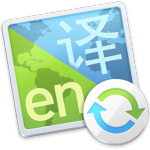Translation under constraints (Text Field Overrun Management)
Don’t make me look at every screen of every language hunting for missing characters.
Problem
One of the big constraints on mobile app localization is the lack of space for translated text. It is not uncommon for the translated text to be longer than the space allocated to the source text (English or Chinese). When the translation is too long to be displayed in the allocated space on the mobile app screen, that problem is referred to as a "text overrun".
The big problem with text overruns is that translators provide translations, developers put these translations into their app, and then the developer must look at every string on every screen for every language and verify that all the characters provided by the translators are visible. Someone who understands a language may be able to quickly see if a word or phrase is truncated because it is too long to be fully displayed. App developers often outsource translations for languages they cannot read. The only way to ensure no characters are being truncated is to compare each character on screen to the translator supplied translations. It is an extremely tedious and expensive task, especially for a high paid app developer.
Solution
As text strings are translated in a visual representation in a web browser, calculations for the area occupied by translations in each field are created and any text overruns too long for the display area are highlighted.
Step one: before giving the app to translators, the developer sees where text overruns are likely to occur and changes the layout before human translation is performed.
Step two: as the translator translates, they immediately see and edit words in a visual representation of the app so that they are aware of how much space has been allocated to a specific text string. When a text string is too long, the interface alerts the translator, and they can choose a translation that fits within the allowed space.
Alternatively, if the app interface has available space for that translated string, they could go back to the developer and request that the developer increase the size of the space available.
Impact
Without a visual representation alerting translators when a translation is too long, the translator does not have the information necessary to provide an appropriately sized translation on the first try. Without this technology, the developer must review every character of every string on every screen for every language. When they find a translation string that is too long, they communicate back to the translator for a shorter translation, import that new translation, and must then review it within the app yet again.
With this technology, the translator can provide appropriate length words and phrases with the first translation and there is no need for a second or third round of corrections. In addition, the developer no longer needs to verify every string on every screen in every language. They can simply review the list of strings that are too long or right on the edge of being too long. This removes a massive amount of time and tedium for the developer and enables a translator to deliver correct sized translations the first time.
Status
US Patent Application Number 61873673
Filed 04-SEP-2014
